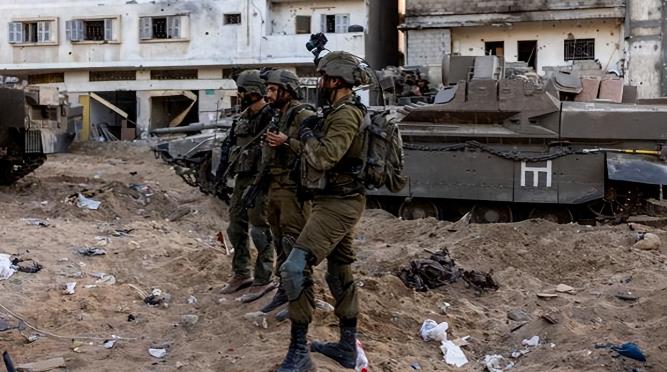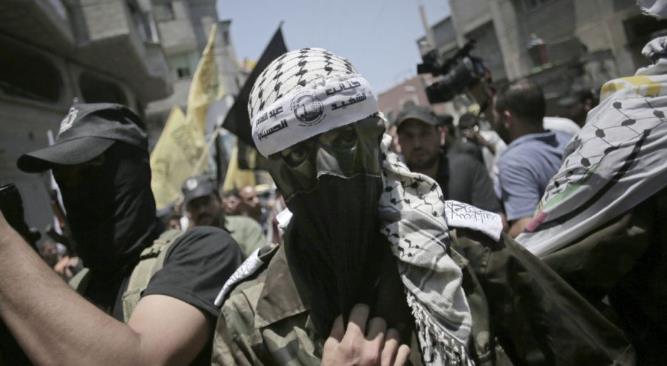Hamas: A Formidable Force – Israel’s Startling Admission
Israel and Hamas are seemingly locked in an endless conflict, with the Israeli Defense Forces (IDF) suffering significant losses.
The ongoing battle between Israel and Hamas appears to be heading towards a protracted war, as the IDF has reported the loss of nine soldiers, including senior commanders, within a week. Despite efforts by the IDF and the media to portray the surrender of Hamas militants and claims of thousands of Hamas members killed, Israeli political and military figures are becoming more cautious, raising doubts about Hamas’s combat capabilities. In a meeting with the US National Security Advisor, Israeli Defense Minister Yoav Gallant acknowledged the difficulty in dismantling Hamas, stating that it could take several months or more.

Aharon Haliva, head of the IDF Intelligence Directorate, believes the war with Hamas could last for months. Surveys indicate a rise in support for Hamas among the populace in the West Bank and Gaza Strip, suggesting that Hamas’s reputation remains unshaken among the people. Reports highlight that Hamas is not an easily destructible foe. Its flexible structure, combining different organizational parts, and an ideology that does not depend on individual leaders, allows the organization to persist even if leaders are killed. This scenario poses a complex and formidable challenge for Israel, potentially escalating the political cost of supporting Israel’s stance.
According to the IDF, since Hamas’s attack on October 7th, there have been hundreds of airstrikes and artillery bombardments in the Gaza Strip, targeting Hamas’s command centers, arsenals, tunnels, and rocket launchers. The IDF claims to have killed thousands of Hamas militants, including senior commanders and political leaders, and has released videos and images showing Hamas militants fleeing and surrendering under IDF attack, in an attempt to showcase the IDF’s superiority and victory.

However, the IDF’s propaganda has not overshadowed its losses and difficulties in the war. Within a week, the IDF has lost nine soldiers, including a Colonel who was killed by a Hamas rocket while leading a rescue operation. This incident marks the IDF’s largest loss in recent years and the highest-ranking Israeli officer to die since the Gaza War. In addition to personnel losses, the IDF has also lost key equipment and facilities, such as tanks, armored vehicles, helicopters, and radar stations. Hamas militants have also released videos and images showing the remnants and bodies of the Israeli army, attempting to demonstrate Hamas’s resistance and bravery.
Some Israeli political and military figures have questioned Hamas’s combat capabilities, suggesting that Hamas has not been weakened as claimed by the IDF but remains a strong and organized force. They point out that Hamas militants in the Gaza Strip number about 20,000, some trained and supported by Iran and Hezbollah. They also note that Hamas has about 10,000 rockets, some capable of striking deep into Israeli territory. Additionally, they highlight Hamas’s use of Gaza’s complex terrain and densely populated environment to build an extensive network of tunnels and underground shelters to evade IDF reconnaissance and strikes. They also point out Hamas’s use of social media and other channels to spread propaganda and intelligence, influencing public opinion and attitudes in Israel and the international community.
In a meeting with the US National Security Advisor, Israeli Defense Minister Yoav Gallant expressed the difficulty of destroying Hamas, stating that it would require months or more. He emphasized that the IDF is doing its best to attack and eliminate Hamas militants, but it is not an easy task and requires time and patience. He reiterated that the IDF aims to completely destroy Hamas’s rocket stockpiles and launching capabilities, as well as its command and control abilities, to eliminate the threat to Israel. He also mentioned that the IDF would continue to target Hamas’s leaders and members to weaken the organization’s structure and morale. Furthermore, he stated that the IDF would continue to destroy and clear Hamas’s tunnels and hideouts, preventing their activities and hiding in the Gaza Strip. He noted that these actions require significant effort and cost from the IDF and need the support and cooperation of the US and other countries.
Aharon Haliva, head of the IDF Intelligence Directorate, believes that the war with Hamas will last for months. He stated that Hamas is not an easily destructible enemy, with a flexible structure and different organizational parts that work together. Even if leaders are killed, the organization can continue to exist due to its ideology. He highlighted that Hamas enjoys widespread support and sympathy in the Gaza Strip, and its image among the people has not been severely shaken, rather seen as heroes and representatives resisting Israel. He also noted that Hamas receives external support and assistance from countries like Iran, Hezbollah, and Turkey.